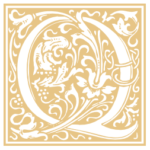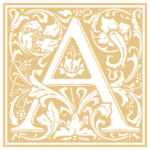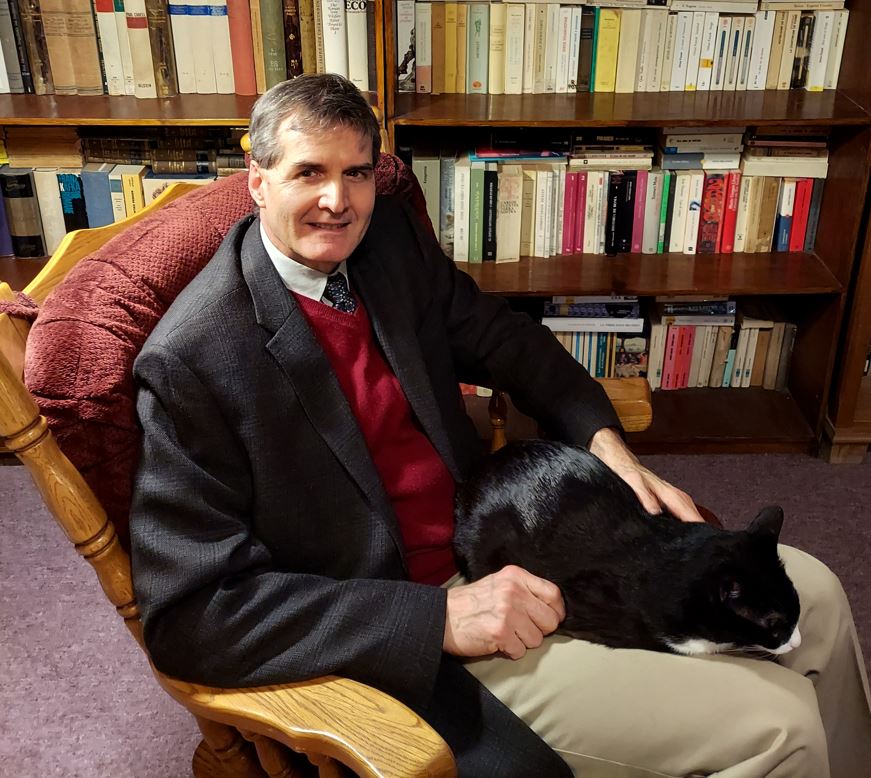
Dear Professor Arguelles,
I thank you for your willingness to address my query regarding a pathway to reading Classical Arabic
Prior to my question, I will provide you with some background on myself and my current competence in the languages I have studied. I am a native English speaker and have studied French (B1-B2), German (B2), Dutch (B2), Persian (A1-A2), and Latin (near completion of Lingva Latina). I have studied these languages almost entirely autodidactically and, with the exception of Latin, using Assimil as the foundation.
As a student of philosophy and theology, my principal aim is the development of linguistic competencies that will allow me to access the classical works of these fields in their original. I do, however, preserve the desire to develop at least a minimal spoken competency in the living languages I study.
In the coming years, the languages I wish to devote myself to most intensely are Arabic and Greek (neither of which I have invested much time into). My question is then how you would recommend approaching this? Which methods, especially for Arabic, would you suggest for someone with my ambitions?
Thank you,
Zane Leach
My reply:

Dear Zane Leach,
Thank you for writing regarding a road-map to reading Classical Arabic literature. As a student of philosophy and theology, I assume you are mainly interested in the great works of centuries past, such as Ibn Khaldun’s Muqaddimah or the writings of philosophers such as Al-Ghazali, but you will also certainly want to develop sound abilities in Modern Standard Arabic so as to be able to converse with scholars and to read contemporary academic and literary texts as well.
You also mention an intention to embark upon an intensive study of Greek, but as that is a different matter altogether, I will invite you to submit a separate request at a later date, and focus only upon Arabic in this response. And as you are a native English speaker who has developed decent abilities in both French and German through self-study using Assimil methods, I am happy to be able to chart a path for you that will involve further using those languages and methods as well.
Your prior study of Persian will have primed you to find the learning of Arabic somewhat less alien, but still you should know that developing real abilities in Arabic is a very demanding and time-consuming task. You should be prepared to put in at least an hour a day, every single day, for a good handful of years before you will feel that you are starting to read with both ease and comprehension. As I myself have done it, I know that it certainly can be done, and the path I will now chart for you is essentially the same one that I myself followed.
There will be several distinct stages of your study. First you will want to go through as many intuitive methods as possible. Then you should systematically do exercises from grammar translation textbooks. After that, you will be able to start using readers. Thereupon you should turn to both a more detailed overview of syntax and to reading versions of classical tales intended for Arabic youth, as well as bilingual texts to expand your vocabulary. After that stage, you may feel equipped to approach specific classical texts for intensive reading with a good dictionary and reference grammar in hand.
For the intuitive phase, if you can get your hands on them, you will want to go through five volumes: the Linguaphone Arabic Course, first published in 1977, then reissued in 1997, as well as both two-volume sets of Assimil’s Arabic, the first just by J.J. Schmidt and published in 1975, while the second is by Schmidt and Dominque Halbout and came out in 2006, with their advanced Perfectionnement Arabe following a few years later. The audio for volume one of Assimil’s first generation Arabic is didactically speaking exactly what one needs as a complete beginner, so you might want to begin with this, but it does speed up by volume two, which tells the continuing and increasingly complex story of Jacques, who is visiting his friend Ahmed and his family, so after volume one you might want to switch to the Linguaphone course before continuing with the rest of the Assimils.
Either after you have internalized Perfectionnement Arabe or simultaneously if you strongly feel the need for greater clarity and precision, you will want to begin to work your way systematically through some old-fashioned self-teaching grammar-translation textbooks with answer keys so you can check yourself. A.S. Triton’s Teach Yourself Arabic, first published in 1943, might be easiest to find, but Rev. G.W. Thatcher’s Arabic Grammar of the Written Language contains more excerpts from classical literary texts. There is no date in my edition, published by Frederick Ungar in New York, but to judge from the typeface, it is a reprint of a 19th century book. Finally, if you can track them down, the four volumes of Jochanan Kapliwatzky’s Arabic Language and Grammar, published by Rubin Mass in Jerusalem between 1940 and 1947, are fantastic.
At this stage, you will be well-equipped to begin using readers, and the first one you turn to can be an edition of a great classical didactic text, the Tales from Kalila wa Dimna: An Arabic Reader by Munther A. Younes (Yale University Press, 1989), which comes with nice clear audio recordings as well. If your German is up to it, you can also turn to August Fischer’s Arabische Chrestomathie for some samples of classical prose (the volume I have is a 5th edition from Otto Harrassowitz, Leipzig, 1948). For some lengthier samples of texts with accompanying audio, you should then use Farhat J. Ziadeh’s A Reader in Modern Literary Arabic, which has been republished by various university presses (Princeton, Oxford, Washington) since 1964. I have a third printing from the International Book Center in 1993 that came with the entire volume recorded on cassette tapes. Finally, you will want to acquire and work through a set of five Contemporary Arabic Readers, edited by James A. Bellamy, Ernest N. McCarus, and Adil I. Yacoub and published by the University of Michigan Press, Ann Arbor, in 1964. They are all valuable, though the volumes on Newspaper Arabic and Essays will probably be of less interest to you than the ones on Formal Arabic, Short Stories, and Poetry.
When you have worked your way through all such readers that you can get your hands on, you will then be ready to turn to two distinctly separate stages of reinforcement that you may well enjoy doing simultaneously. First of all, before approaching original texts, you will want to ensure that your grasp of formal grammar is as solid as possible. Therefore, you will profit from reading through the thousands of sample sentences in Vincente Cantarino’s three volumes of the Syntax of Modern Arabic Prose (Indiana University Press, Bloomington, 1974). W. Wright’s extensive Arabic Grammar also contains hundreds of sample sentences, these taken more from Classical sources as the volume was originally published in 1859, though it was available as a reprint from Dover as late as 2005.
Secondly, before attempting classics on your own, it would behoove you to expand your vocabulary by reading easier works that were intended not for foreign learners of Arabic, but for Arabic learners of English or French, as well as for Arabic youth. In the first instance, you will want to see if you can acquire some bilingual texts, Arabic-English or Arabic-French. The most extensive collection I know of is published by the Dar Al-Bihar / Dar Wa Maktabat Al-Hilal in Beirut. These are full-length versions of European novels with matching line by line Arabic translations. Also based in Beirut is the Librarie du Liban, which produces multiple different series of fully voweled texts for Arab children and teenagers, including many versions of traditional legends and tales such as those from 1001 Nights. I recommend reading the bilingual texts rapidly and silently to grow your vocabulary, and the voweled texts aloud to develop reading fluency, and I would suggest staying in this stage for at least a year or two before turning to original Classic texts.
When you are ready to approach Classics in the original on your own strength, you should know two things. On the one hand, there is very little punctuation in them, and often no paragraphs, so you will be faced with a wall of text; on the other, they will be fully voweled (thankfully!). So this is where your practice reading the young adult texts will prove valuable, for the best if not the only way to untangle Classic texts is to read them aloud, or more properly to chant them when dealing with theological works. You will, of course, want to have both a good reference grammar at hand (your Wright will still serve well for this) as well as a couple of dictionaries. The Hans Wehr Dictionary of Modern Written Arabic, as edited and expanded as well as translated into English by J.M. Cowan (Otto Harrassowitz, Wiesbaden, 1994) is organized the traditional way by root, whereas Lorenz Kropfitsch’s Langenscheidts Handwörterbuch Arabisch-Deutsch (Langenscheidt 2000) is purely alphabetical, as well as obviously still in the original German.
I wish you the best of success and fulfillment during the wonderful years of exploration of Arabic literature that you have before you!
With best regards,
Alexander Arguelles

